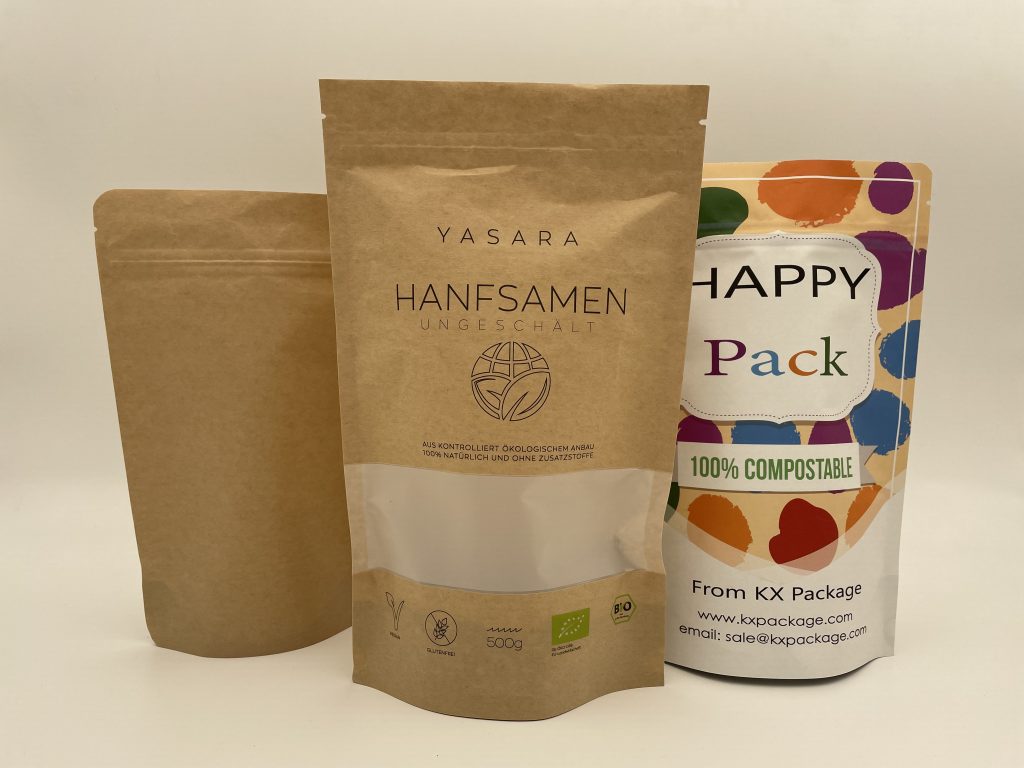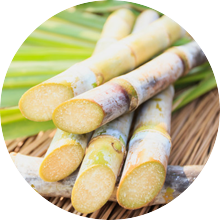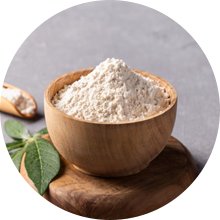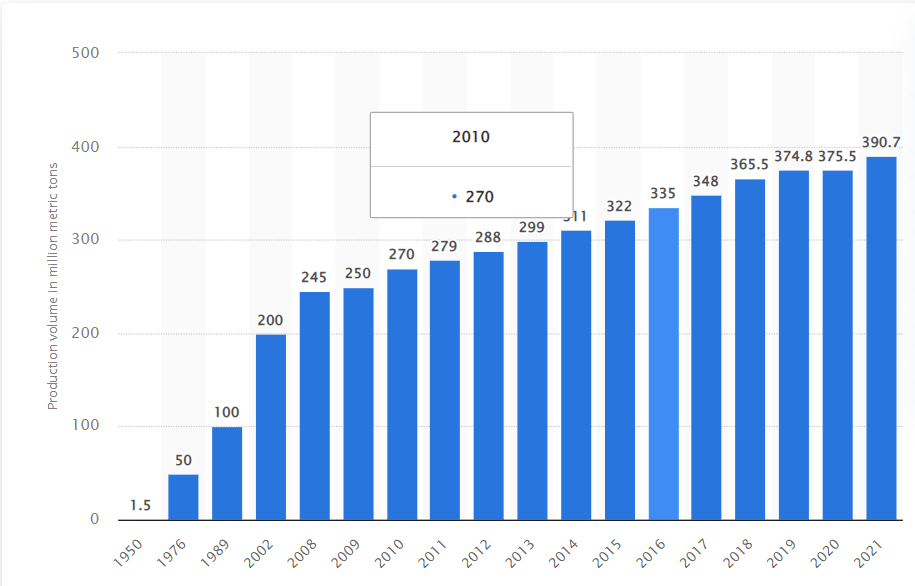Due to the environment pressure, compostable packaging bags is becoming a hot packging solution.Bio-based plastics and biodegradable plastics are new materials that are environmentally friendly and sustainable to replace traditional plastics that mainly use petroleum as raw materials.
“Degradable,” “biodegradable,” and “compostable” are terms that people often refer to when talking about these materials, which are similar but different.

Degradable plastics include plastics that can be degraded by physical and biological factors (light or heat, or microbial action). So-called Oxo-degradable (degradation accelerated by catalysts or activators at high temperature) or photodegradable starch-polyethylene plastics pose some environmental concerns. These materials do not degrade as quickly as compostable plastics and may leave behind debris. The hydrophobic fragments formed by these degradations have a large surface area and may migrate into groundwater and soil, where they adsorb and retain some hydrophobic highly toxic substances, such as PCB and DDT, making the content of toxic substances up to 1% of the background content. A million times more than enough to be a delivery system for toxic substances in the environment. Therefore, it must be ensured that the product is completely biodegradable within an extremely short time determined by the treatment facility.
Biodegradable plastics are those that can be completely digested by microorganisms in the processing system as food for energy (entering the food chain). The determination of this complete microbial digestion/utilization is measured by testing whether the carbon element of the plastic can be completely converted into CO2 through the microbial process that occurs in the cells.
In addition to being biodegradable by microorganisms, there is a time requirement that must be met for a plastic to be called “compostable”. For example, ASTM 6400 (Specification for Compostable Plastics), ASTM D6868 (Specification for Biodegradable Plastics for Surface Coating of Paper or Other Compostable Media) or EN 13432 (Compostable Packaging) Should biodegrade within 180 days. The industrialized composting environment refers to the specified temperature of about 60°C and the presence of microorganisms. By this definition, compostable plastics leave no fragments in residue that are more than about 12 weeks old, contain no heavy metals or toxic substances, and support plant life.
Compostable packaging is made of some kind of organic matter that can break down. There are multiple types of compostable packaging materials, from traditional cardboard and paper to bioplastics. Some packaging can be composted at home, but some has to be composted industrially.
There are multiple kinds of compostable packaging, which may need to be disposed of differently depending on how they’re made and the materials they’re made from.
This material is mainly used as a base for plastic packaging. PLA plastic is made from suger cane, starch and corn.



Decomposes naturally into biomass, carbon dioxide, and water without specialized composting facilities. Approved for high-barrier applications up to 100℃
Compost KP: Made with revoded PLA and kraft paper. Great for dry and semi-dry food options, provides barrier protection.
Compost NPT: Wash Coat, transparent cellulose, and moisture barrier & seal coating. Made with nature flex, which is compostable, heat sealible and transparent, great moisture barrier.
Despite the rapid economic and technological development, people’s dependence on plastics is still very high. This also produces a very large amount of plastic waste and pollution.
Pic-Annual Production of plastics worldwide from 1950-2021

In order to protect the environment, compostable material are aready applicated in many industry, special in packaging industry.
Benefits of compostable packaging
-Helps divert organic waste from landfill
-Reduces greenhouse gas emissions from organics
-Made from plant-based, renewable materials
-Reduces dependency on fossil fuels
-Can be recycled into nutrient-rich compost
Although compostable plastic bags are environmentally friendly and harmless, it does not mean that they can be thrown around and discarded in the soil at people’s will, and they can be naturally decomposed and turned into carbon dioxide and water. Compostable plastics are still chemical products after all, and they also need to be degraded in a specific environment.
Click here to know what types of compostable packaging we can make.
https://www.kxpackage.comcompostable-packaging/
Click here to know more green packaging we can make.
You can visit our website to know more about our flexible packaging pouch:
